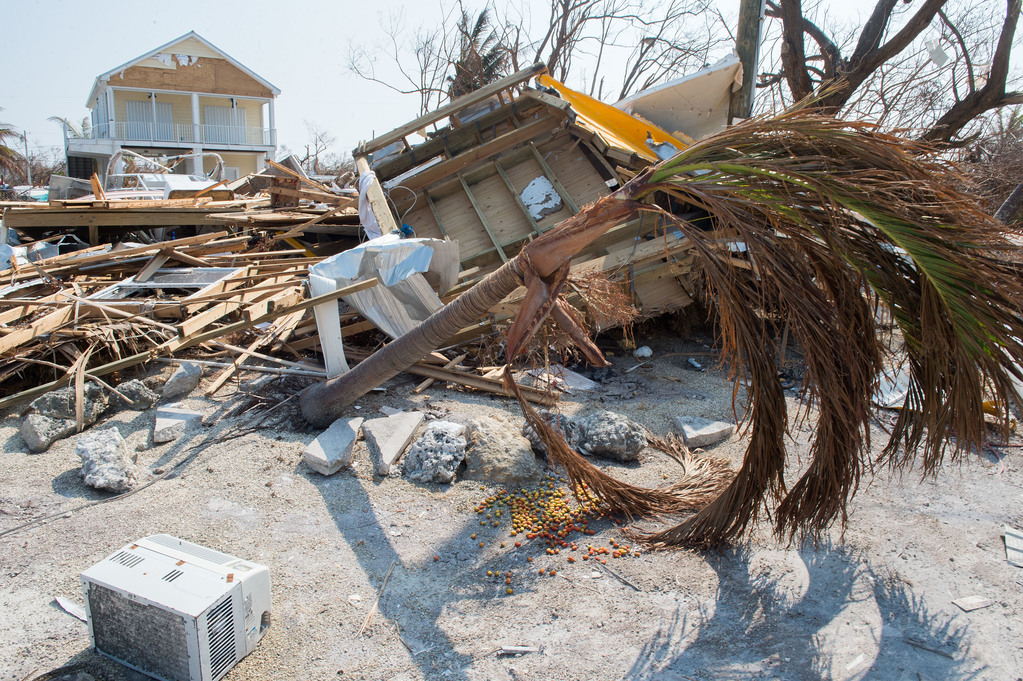
Hurricane Ian certainly will cause billions of dollars in property damage amid a crisis in Florida’s insurance market that features withdrawal or closure of carriers and a tightening in the availability of reinsurance — that is, insurance for insurers.
Forecasters predicted Tuesday that Ian would hit near Venice, south of Tampa Bay in Sarasota County, on Wednesday morning, although the damage could extend for hundreds of miles. That would place more than 1 million homes with a replacement value of $258.3 billion at risk of storm surge, according to CoreLogic, an insurance data analysis firm.
“Due to Hurricane Ian’s slower speed and rapid intensification in the eastern Gulf of Mexico, the threat of a widening wind field bringing damaging storm surge increases each day,” said Tom Jeffery, senior hazard scientist at the company.
“Many homes along Florida’s western coast are at risk of storm surge inundation regardless of where the storm makes landfall, and even more homeowners will contend with heavy rainfall and hurricane-force winds throughout midweek,” he said.
Backing the insurance market is the Florida Hurricane Catastrophe Fund (FHCF, or Cat Fund), a state-backed reinsurer that’s holding on to liquid resources of $16.2 billion, with an estimated bonding capacity of $8 billion, according to Emilie Oglesby, spokeswoman for the State Board of Administration, which oversees the fund.
“After a hurricane, the FHCF will issue bonds if the projected reimbursement payments exceed our cash resources,” Oglesby said by email.
“The primary source of revenue to pay off the bonds is emergency assessments on most property/casualty insurance premiums. Workers’ compensation, medical malpractice, accident and health, and federal flood insurance are currently exempt from assessment,” Oglesby added.
Additionally, the Florida Legislature earlier this year appropriated another $2 billion for reinsurance — “an added layer of protection,” Gov. Ron DeSantis noted Tuesday.
Storm surge
He predicted most of the property damage would come from storm surge, less so from wind damage. The Federal Flood Insurance Program bears much of the insurance risk from the former, with close to 1 million policies in the Tampa Bay region, according to DeSantis, and private flood insurers have around 15,000 policies in the area.
“I’m not saying there’s not going to be wind damage — I mean, it’s a hurricane, so you’re likely to see that,” the Governor said.
“But when you’re talking about things like Tampa Bay, you know, the danger and why Tampa Bay is so fragile, in terms of these types of storms and why people have said that’s the one place in Florida that could have the most damage, is because that water has got nowhere to go in Tampa Bay.”
Reinsurance rates have increased in Florida by 50%, according to an analysis by broker Gallagher Re, which said the situation was approaching “distress” levels.
Multiple insurers have been canceling policies in Florida or applying for, and being granted, rate hikes from the Florida Office of Insurance Regulation (OIR). They’ve cited higher losses due to worsening weather, widespread litigation, rising costs of construction and repairs, and rising property values.
In July, the insurer rating company Demotech Inc. downgraded 17 Florida companies, prompting state regulators to begin searching for an alternative source of solvency analysis, as Florida Politics reported. Additionally, OIR established an alternative reinsurance arrangement to be operated through Citizens Property Insurance Corp., the state-backed insurer of last resort; the move would insulate homeowners whose mortgages are contingent on coverage.
All of this has increased pressure on Citizens, which now is carrying 1,065,000 policies, according to spokesperson Michael Peltier. Last week alone, it added 9,000 policies; the week before, 7,500; and the week before that, 17,000, Peltier said in a telephone interview.
But that’s what Citizens was created, he added. “We’re doing what we were designed to do, respond to the market to make sure people get covered.”
The Legislature’s reforms could take a year to fully kick in, Peltier said.
He couldn’t estimate Citizens’ exposure from Ian. “It’s still a guessing game,” he said.
In June, the OIR granted Citizens a 6.4% rate increase on homeowner policies.
Brandes’ warning
Perhaps the most prominent proponent of insurance reform has been state Sen. Jeff Brandes of Pinellas County, who’s leaving this year after 10 years in the upper chamber. In a Twitter thread, he attempted to assess the potential financial losses. His conclusions weren’t pretty.
“To give you some scale of how this could play out if we get a direct hit from Ian, I did a little back of the napkin math this afternoon. Citizens represents roughly 25% of Tampa Bay policyholders (Pinellas, Hillsborough, Pasco),” Brandes wrote.
“If we assume an increasingly likely scenario of a Tampa Bay landfall we are looking at just @citizens_fla having 200k claims. The average payment for claims during Irma was 45k so let’s assume it 50k today. 200000×50000 =10,000,000,000 that’s 10 billion (for just Citizens).
“If we add in the rest of the industry this could be a 40B+ storm for just insured properties. Given the density of Tampa Bay, the labor market, supply chain problems, and litigation environment, we are facing something no one alive has seen in Tampa Bay,” Brandes concluded.
___
Michael Moline reporting via Florida Phoenix.
Florida Phoenix is part of States Newsroom, a network of news bureaus supported by grants and a coalition of donors as a 501c(3) public charity. Florida Phoenix maintains editorial independence. Contact Editor Diane Rado for questions: [email protected]. Follow Florida Phoenix on Facebook and Twitter.




One comment
Tom
September 27, 2022 at 6:24 pm
Topical 3 ocean breeze coming. Gonna be a good time for fishing over the next few days… especially Tampa and further south. If you guy have a houseboat, I’d recommend taking it out now. World records can be achieved in these conditions. Don’t miss out.
Comments are closed.